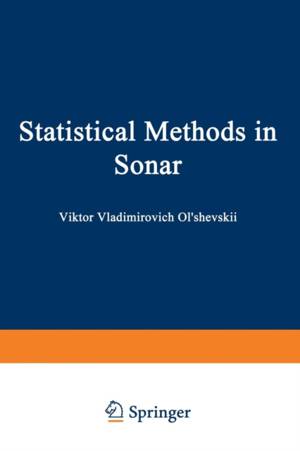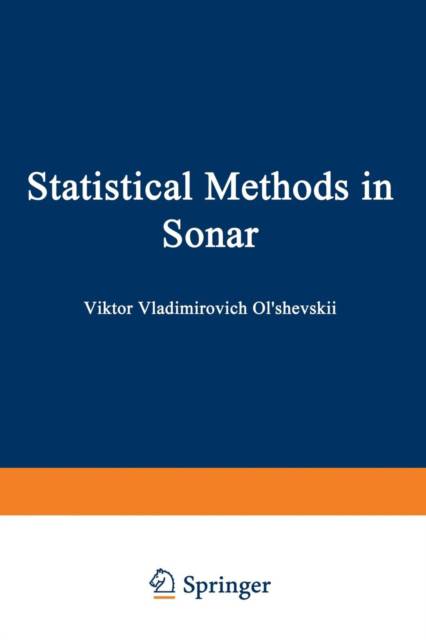
- Afhalen na 1 uur in een winkel met voorraad
- Gratis thuislevering in België vanaf € 30
- Ruim aanbod met 7 miljoen producten
- Afhalen na 1 uur in een winkel met voorraad
- Gratis thuislevering in België vanaf € 30
- Ruim aanbod met 7 miljoen producten
Zoeken
€ 111,95
+ 223 punten
Omschrijving
Dr. V. V. Ol'shevskii is perhaps most familiar to Western readers as the author of "Characteristics of Sea Reverberation," published in translation by Consultants Bureau (New York, 1967). The present book, "Statistical Methods in Sonar," is, in part, a sequel to the first book, where now the author's stated purpose is "to acquaint a broad range of specialists with the use of contemporary statistical methods for solving theoretical and applied sonar problems. " As the author quite properly observes, the work is illustrative, devoted to a variety of relevant, specific technical problems from an analytical point of view, and is not in any way intended to be an all-inclusive treatise. Nevertheless, as the reader can verify subse- quently, the author has succeeded in accomplishing his stated purpose. He has, moreover. provided us with a use- ful and, in a number of instances, provocative work, which even five years after its original appearance retains its freshness and interest with material not to date covered in other books on the subject (for example, see Horton [ Q], Stephens [41] ). * In this Foreword we first concisely review the author's material, on a chapter-by-chapter basis, after which a short general critique is given. Attention is called to various topics of particular interest to the professional audience. as well as to a number of highlights which deserve the reader's notice (a few additional comments on the technical editing are then included).
Specificaties
Betrokkenen
- Auteur(s):
- Uitgeverij:
Inhoud
- Aantal bladzijden:
- 242
- Taal:
- Engels
- Reeks:
Eigenschappen
- Productcode (EAN):
- 9781475704761
- Verschijningsdatum:
- 26/07/2012
- Uitvoering:
- Paperback
- Formaat:
- Trade paperback (VS)
- Afmetingen:
- 152 mm x 229 mm
- Gewicht:
- 358 g

Alleen bij Standaard Boekhandel
+ 223 punten op je klantenkaart van Standaard Boekhandel
Beoordelingen
We publiceren alleen reviews die voldoen aan de voorwaarden voor reviews. Bekijk onze voorwaarden voor reviews.











